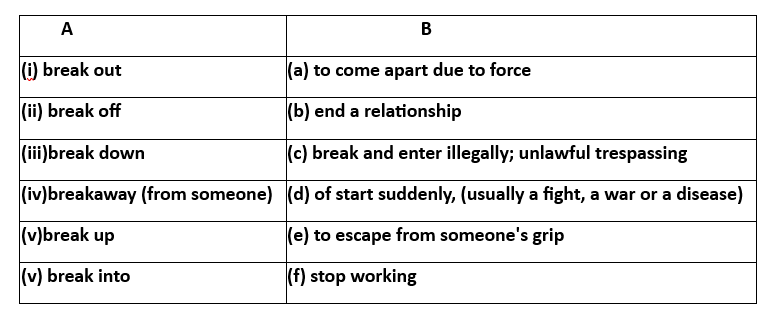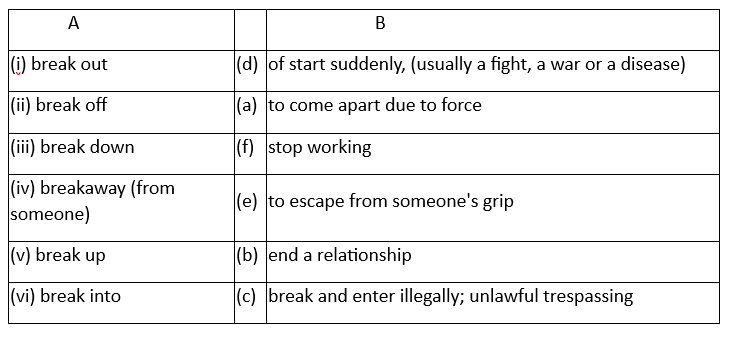NCERT Solutions for Class 9 English Beehive Chapter 8 - Kathmandu
Page No: 131
Thinking about the Text
Q1. On the following map mark out the route, that the author thought of but did not take, to Delhi.
Ans: The author considered a route from Kathmandu to Delhi that involved several stages. First, he would travel by bus and train from Kathmandu to Patna. Next, he would sail from Patna to Allahabad along the Ganges River. Finally, he would continue his journey from Allahabad to Delhi by boat on the Yamuna River.
Page No: 132
I. Answer these questions in one or two words or short phrases.
Q1. Name the two temples the author visited in Kathmandu.
Ans: The two temples the author visited in Kathmandu were the Pashupatinath temple and the Baudhnath Stupa.
Q2. The writer says, “All this I wash down with Coca-Cola.” What does ‘all this’ refer to?
Ans: ‘All this’ refers to the writer indulging in a bar of marzipan, a corn-on-the-cob roasted over a charcoal brazier, seasoned with salt, chili powder, and lemon, while also enjoying a couple of love story comics and a Reader’s Digest. This assortment is washed down with Coca-Cola and a sickening orange drink, which makes him feel much better.
Q3. What does Vikram Seth compare to the quills of a porcupine?
Ans: Vikram Seth compares the fifty or sixty bansuris that extend from the pole of a flute seller to the quills of a porcupine. These flutes, made of bamboo, resemble the sharp quills in their arrangement, protruding in various directions.
Q4. Name five kinds of flutes.
Ans: The reed neh, the Japanese shakuhachi, the deep bansuri of Hindustani classical music, the clear or breathy flutes of South America, and the high-pitched Chinese flutes.
II. Answer each question in a short paragraph.
Q1. What difference does the author note between the flute seller and the other hawkers?
Ans: The author observes a distinct difference between the flute seller and the other hawkers. While the other hawkers loudly advertised their goods, the flute seller chose a quieter approach. He played his flute slowly and meditatively, allowing the music to rise above the surrounding noise without any excessive display or shouting. His manner of selling was casual, as if making a sale was merely incidental to his music.
Q2. What is the belief at Pashupatinath about the end of Kaliyug?
Ans: At Pashupatinath, there is a small shrine that protrudes from the stone platform on the river bank of Bagmati. It is believed that when the shrine emerges fully, the goddess inside it will escape. The evil period of Kaliyug on earth will then end.
Q3. The author has drawn powerful images and pictures. Pick out three examples of each of
(i) the atmosphere of ‘febrile confusion’ outside the temple of Pashupatinath (for example: some people trying to get the priest’s attention are elbowed aside…)
(ii) the things he sees
(iii) the sounds he hears
Ans:
(i) The author has drawn powerful images and pictures of the atmosphere of ‘febrile confusion’ outside the temple of Pashupatinath. These include the following: a group of saffron-clad Westerners struggling to enter the main gate as only Hindus were allowed to enter the temple; a fight that breaks out between two monkeys; and a royal Nepalese princess for whom everyone makes way.
(ii) In terms of sights, he observes the Baudhnath Stupa, characterised by its immense white dome surrounded by a road. Small shops line the outer edge, selling items such as felt bags, Tibetan prints, and silver jewellery, and the area is notably free of crowds. On the bustling streets of Kathmandu, he sees fruit sellers, flute vendors, and hawkers selling postcards, Western cosmetics, film rolls, chocolate, copper utensils, and Nepalese antiques.
(iii) The sounds he hears include film songs blaring from radios, car horns, bicycle bells, and vendors shouting their wares. He also enjoys the flute music, which he describes as both the most universal and the most particular of sounds.
III. Answer the following questions in not more than 100 − 150 words each.
Q1. Compare and contrast the atmosphere in and around the Baudhnath shrine with the Pashupathinath temple.
Ans: The atmosphere at the Pashupatinath temple is characterised by chaos and noise. Worshippers jostle to get the priest's attention, while others push to the front. Saffron-clad Westerners struggle for entry, and monkeys fight, adding to the din. Nearby, a corpse is cremated on the banks of the Bagmati river, where washerwomen work and children bathe. This vibrant scene is filled with activity and confusion. In contrast, the Baudhnath stupa offers a sense of serenity. Its large white dome stands amidst busy streets, yet it remains a peaceful haven. There are no crowds, allowing for a tranquil atmosphere at this Buddhist shrine. Small shops run by Tibetan immigrants line the outer edge, selling items like felt bags and silver jewellery, contributing to the calm rather than the chaos.
Q2. How does the author describe Kathmandu’s busiest streets?
Ans: Kathmandu's narrowest and busiest streets are alive with activity. Small shrines and flower-adorned deities can be found alongside various vendors. The streets are bustling with fruit sellers, flute sellers, and hawkers offering postcards, as well as shops selling Western cosmetics, film rolls, chocolate, copper utensils, and Nepalese antiques. The air is filled with the sounds of film songs blaring from radios, car horns, bicycle bells, and vendors shouting their wares. Stray cows roam the roads, adding to the lively atmosphere. Among the vendors, a flute seller stands out, with many bansuris displayed on his pole. His serene music rises above the surrounding noise, creating a unique auditory experience in the midst of the chaos.
Q3. “To hear any flute is to be drawn into the commonality of all mankind.” Why does the author say this?
Ans: The author views flute music as both universal and unique. Flutes exist in every culture, including the reed neh, the recorder, the Japanese shakuhachi, the deep bansuri of Hindustani classical music, and the high-pitched Chinese flutes. Each type has its own fingering and range, yet they all share a commonality. Listening to any flute connects us to the essence of humanity, as the music closely resembles the human voice. The motive force behind this music is the breath, which is essential for playing. This reflects how, despite our differences in caste, culture, and religion, all humans share the same living breath, highlighting our fundamental similarities.
Thinking about Language
I. Read the following sentences carefully to understand the meaning of the italicized phrases. Then match the phrasal verbs in Column A with their meanings in Column B.
1. A communal war broke out when the princess was abducted by the neighboring prince.
2. The cockpit broke off from the plane during the plane crash.
3. The car broke down on the way and we were left stranded in the jungle.
4. The dacoit broke away from the police as they took him to court.
5. The brothers broke up after the death of their father.
6. The thief broke into our house when we were away.
Ans:
II.
Q1. Use the suffix −ion or −tion to form nouns from the following verbs. Make the necessary changes in the spelling of the words.
Example: proclaim − proclamation
Ans:
1.
Q2. Now fill in the blanks with suitable words from the ones that you have formed.
(i) Mass literacy was possible only after the ___________ of the printing machine.
(ii) Ramesh is unable to tackle the situation as he lacks ____________.
(iii) I could not resist the _____________ to open the letter.
(iv) Hardwork and ___________are the main keys to success.
(v) The children were almost fainting with ______________after being made to stand in the sun.
Ans:
(i) Mass literacy was possible only after the invention of the printing machine.
(ii) Ramesh is unable to tackle the situation as he lacks direction.
(iii) I could not resist the temptation to open the letter.
(iv) Hard work and dedication are the main keys to success.
(v) The children were almost fainting with exhaustion after being made to stand in the sun.
III. Punctuation
Use capital letters, full stops, question marks, commas and inverted commas wherever necessary in the following paragraph.
an arrogant lion was wandering through the jungle one day he asked the tiger who is stronger than you you O lion replied the tiger who is more fierce than a leopard asked the lion you sir replied the leopard he marched up to an elephant and asked the same question the elephant picked him up in his trunk swung him in the air and threw him down look said the lion there is no need to get mad just because you don’t know the answer
Answer
An arrogant lion was wandering through the jungle. One day, he asked the tiger, “Who is stronger than you?” “You, O lion!” replied the tiger. “Who is more fierce than a leopard?” asked the lion. “You sir,” replied the leopard. He marched up to an elephant and asked the same question. The elephant picked him up in his trunk, swung him in the air, and threw him down. “Look,” said the lion, “there is no need to get mad just because you don’t know the answer.”
Page No: 134
IV. Simple Present Tense
In these sentences words like every day, often, seldom, never, every month, generally, usually, etc. may be used.
1. Fill in the blanks with the correct form of the verb in brackets.
(i) The heart is a pump that ____________(send) the blood circulating through our body. The pumping action ____________(take place) when the left ventricle of the heart ____________(contract). This ____________(force) the blood out into the arteries, which ____________(expand) to receive the oncoming blood.
(ii) The African lungfish can live without water for up to four years. During drought, it ____________(dig) a pit and ____________(enclose) itself in a capsule of slime and earth, leaving a tiny opening for air. The capsule ____________(dry) and ____________(harden), but when rain ____________(come), the mud ____________(dissolve) and the lungfish ____________(swim) away.
(iii) Mahesh: We have to organise a class party for our teacher. ____________(Do) anyone play an instrument?
Vipul:Rohit ____________(play) the flute.
Mahesh: ____________(Do) he also act?
Vipul: No, he ____________(compose) music.
Mahesh: That’s wonderful!
Ans:
(i) The heart is a pump that sends the blood circulating through our body. The pumping action takes place when the left ventricle of the heart contracts. This forces the blood out into the arteries, which expands to receive the oncoming blood.
(ii) The African lungfish can live without water for up to four years. During drought, it digs a pit and encloses itself in a capsule of slime and earth, leaving a tiny opening for air. The capsule dries and hardens, but when the rain comes, the mud dissolves and the lungfish swims away.
(iii) Mahesh: We have to organise a class party for our teacher. Does anyone play an instrument?
Vipul: Rohit plays the flute.
Mahesh: Does he also act?
Vipul: No, he composes music.
Mahesh: That’s wonderful!
|
180 videos|975 docs|124 tests
|
FAQs on NCERT Solutions for Class 9 English Beehive Chapter 8 - Kathmandu
| 1. "काठमांडू" पाठ का मुख्य विषय क्या है ? |  |
| 2. "काठमांडू" पाठ में लेखक ने किस प्रकार के दृश्य का वर्णन किया है ? |  |
| 3. "काठमांडू" पाठ में लेखक ने काठमांडू की यात्रा का अनुभव कैसे व्यक्त किया है ? |  |
| 4. काठमांडू में संस्कृति और परंपरा का क्या महत्व है ? |  |
| 5. "काठमांडू" पाठ से हमें क्या सीखने को मिलता है ? |  |






















